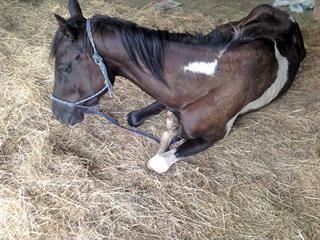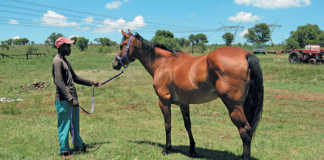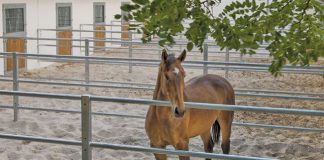
At the time of writing, the news is full of stories about thin horses being confiscated from owners by welfare organisations. A long winter and a shortage of good roughage largely explain the generally low condition of farm horses. But it’s not always just lack of food that makes a horse thin.
Finding out the cause of weight loss, or failure to gain weight, is essential if you want to improve the body condition score of a skinny horse. First, though, what do we mean by ‘thin’? Sometimes it depends on breed. An overweight American Saddler, for example, is a lot ‘thinner’ than a fairly lean Shire horse.
Arabians are true athletes and, at a level of peak fitness for Endurance, have ‘ribby’ flanks and appear to be underweight if the viewer is accustomed to show-quality Warmbloods. The body condition score (BCS) is used to counteract subjective
visual impressions. If done properly, it objectively measures the thickness of muscle and fat covering the bones. In cattle, this mainly involves a score of one to five, where one is very thin and five is overweight.
For horses, welfare societies use a score of 10, where any score below five is unacceptable. The BCS here is still somewhat subjective, as breeds such as Quarter Horses are bred to have a large muscle mass, while American Saddlers are bred to be lean and elegant. However, careful palpation of the hip bones and lateral processes of the spinal cord will give you a good idea if the horse has an adequate covering of flesh on its bones.
Getting the feed right
A vet will help you test body condition. If the BCD shows your horse to be too skinny, the obvious first step to address is feeding. Most people immediately increase the level of concentrates (which contain a large proportion of easily digestible carbohydrates such as maize meal) to improve body condition in thin horses. But more often, it’s the quality and quantity of roughage that makes horses lose or put on condition.
Roughage is an essential part of a horse’s diet and a lack of this can cause weight loss in several different ways. Firstly, roughage is required to promote normal contraction of intestines and so improve digestion. Secondly, it prevents the acidity that leads to stomach ulcers and wind sucking. The latter conditions are a common cause of underweight. An inability to chew food properly due to uneven teeth is another reason that horses remain thin.
Parasites – a big problem
Internal parasites such as bots and worms are a major cause of poor condition, as they tend to absorb nutrients meant for the horse. A high worm burden can also lead to chronic anaemia, which affects circulation and prevents regeneration of muscle after exercise. Even external parasites can have an effect. Ticks create skin irritations and suck blood.
Other causes of poor condition include chronic biliary, injury or cancers such as melanoma. Chronic biliary, also called piroplasmosis, starts when an infected tick regurgitates saliva into the tissues of the host to prevent blood clotting before it starts to feed.
Because there are so many causes, a thorough diagnosis is needed before trying to fatten a horse. This includes examining its history in detail, seeing and weighing the amount of feed it is eating, and giving it a thorough clinical examination. This should include blood tests.













